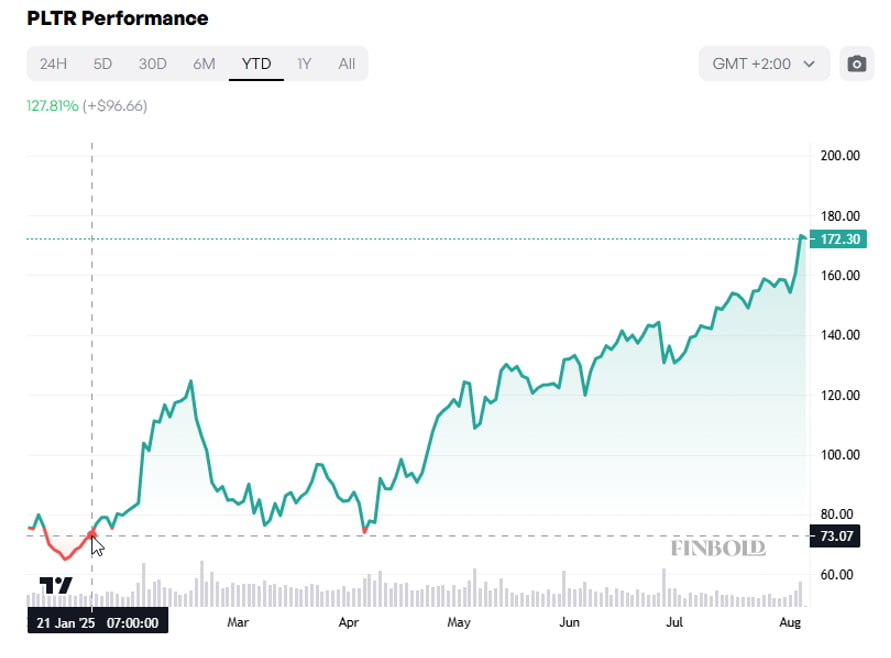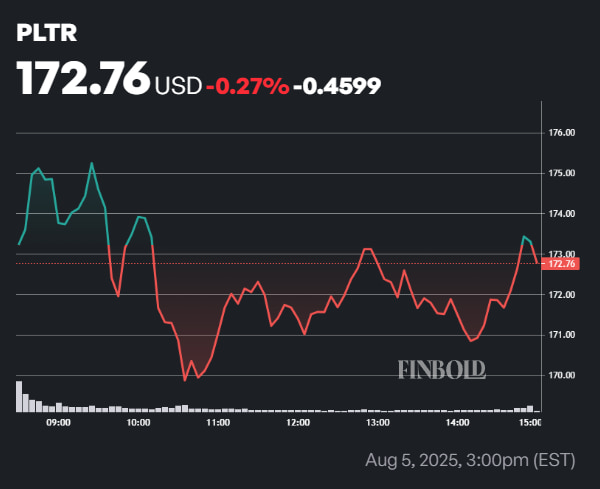James Comer, an American politician representing Kentucky’s first congressional district in the United States House of Representatives, bought a single stock the day following President Trump’s 2025 inauguration.
Namely, on January 21, the politician bought between $1,001 and $15,000 worth of Palantir (NASDAQ: PLTR) stock, the transaction later being filed on February 11.
Since then, Palantir stock has gone up 140%, with the company delivering remarkable second-quarter results, including revenue exceeding $1 billion.
Expectedly, Comer’s timing is drawing a lot of attention, with the market debating whether he was merely lucky or privy to insider information.

Receive Signals on SEC-verified Insider Stock Trades
This signal is triggered upon the reporting of the trade to the Securities and Exchange Commission (SEC).
Palantir stock is still rising
At the time of writing, Palantir was trading at $172.76, down -0.60% in pre-market but up almost 30% on the monthly chart.

As mentioned, the software company blew past Wall Street expectations in the past quarter, with a 48% year-over-year (YoY) increase in revenue and a 78% surge in earnings per share (EPS).
The success was largely chalked up to its Artificial Intelligence Platform (AIP), which generated 93% more revenue YoY thanks to growing demand for artificial intelligence (AI).
Receive Signals on US Congress Members' Stock Trades
Stay up-to-date on the trading activity of US Congress members. The signal triggers based on updates from the House disclosure reports, notifying you of their latest stock transactions.
Driven by the bullish momentum, analyst Gil Luria of D.A. Davidson raised his price target on Palantir from $115 to $170, calling it the “best story in all of software,” as reported by market analysis platform TipRanks on August 6.
According to the same report, Gregg Moskowitz of Mizuho also raised his price target from $135 to $165, maintaining a “Hold” rating.
However, the average 12-month price target on TipRanks currently stands at $150.60, implying a 13% downside from current levels.
Featured image via Shutterstock









